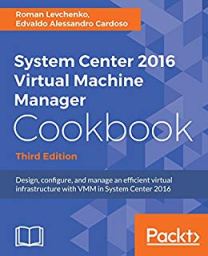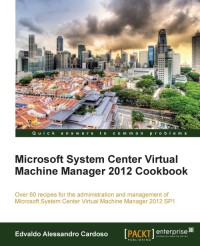VMM 2012 SP1: Installing and Configuring Dell EqualLogic PS Series SMP provider : NEW
VMM 2012 SP1 supports the same storage arrays that were supported in VMM 2012, plus the SMP provider. For more info : (http://social.technet.microsoft.com/wiki/contents/articles/4583.scvmm-2012-storage-and-load-balancer-provider-downloads-en-us.aspx)
Below are the steps to install and connect your Dell EqualLogic PS Storage to VMM 2012 SP1 using the new SMP Provider
1. Install the Dell EqualLogic Host Integration Tools 4.5 on the VMM management server, and then restart the server.
Note: Dell EqualLogic Host Integration Tools compatible with SCVMM 2012 SP1 is planned for availability late this year. The new release is the next step in integrating Microsoft applications with EqualLogic storage arrays.
Contact Dell to obtain the Dell EqualLogic Host Integration Tools.
2. Start the VMM command shell as an administrator. Import the EqualLogic PowerShell Tools module and then add the storage provider by using the New-EqlGroupAccess cmdlet. Then, import the storage provider into VMM by using the Import-SCStorageProvider cmdlet. For example:
PS C:\> Import-Module -Name “C:\Program Files\EqualLogic\bin\EQLPSTools.dll”
PS C:\> New-EqlGroupAccess -GroupName “EqlGroup” -GroupWKAddress 10.0.0.0 -GroupMKAddress 10.0.0.1 -UserName Administrator -Password “AcctPassword”
PS C:\> Import-SCStorageProvider
It may take a while depending on the number of storage pools and logical units that already exist on the array.
To verify whether the provider was imported, in the Fabric workspace of the VMM console, in the Fabric pane, expand Storage, and then click Providers.
In the Providers pane, verify that the provider appears, with a status of Responding.
4. To bring the storage pools under management and to assign classifications, follow these steps:
a. In the Arrays pane, right-click the array, and then click Properties.
b. In the Array Name Properties dialog box, click the Storage Pools tab.
c. Under Storage Pools, select the check box next to each storage pool that you want VMM to manage.
d. Under Classification, select an existing classification or create a new one. To create a new one, click Create classification, enter a classification, click Add, and then in the Classification list, select the new classification.
e. When you are finished, click OK.
f. Open the Jobs workspace, and verify that the Sets Storage Array job completes.
5. Verify that you can create and delete logical units. To do this, follow these steps:
a. In the Fabric pane, under Storage, click Classifications and Pools.
b. In the Classifications, StoragePools, and Logical Units pane, click the desired storage pool.
c. On the Home tab, click Create Logical Unit.
d. In the Create Logical Unit dialog box, enter a name, optional description, and size.
e. If the storage pool is configured to support thin provisioning, optionally click Create thin storage logical unit with capacity committed on demand, and then click OK.
When the job completes, in the Classifications, StoragePools, and Logical Units pane, verify that the new logical unit is listed under the pool.
f. To remove the logical unit, click the logical unit. Then, on the Home tab, in the Remove group, click Remove. Review the warning message, and then click OK to continue. Verify that the logical unit is removed from the list.
To configure storage on a Hyper-V host, follow the procedures in in the System Center 2012 – Virtual Machine Manager topic How to Configure Storage on a Hyper-V Host. Try assigning a logical unit to a host, with an assigned drive letter.




My install doesn’t like the GroupMKAddress command. Is that
something that changed from the beta to the release
version?
Hi Tim
There is an update on the steps with the HIT 4.5 released in Dec and the VMM 2012 SP1 RTM
I am working on it
Hi Alessandro,
Thanks for your post. I updated your post on the Technet Wiki with the HIT 4.5 procedure for VMM 2012 SP1 RTM.
http://social.technet.microsoft.com/wiki/contents/articles/12038.vmm-2012-sp1-installing-and-configuring-dell-equallogic-ps-series-smp-provider.aspx
thank you